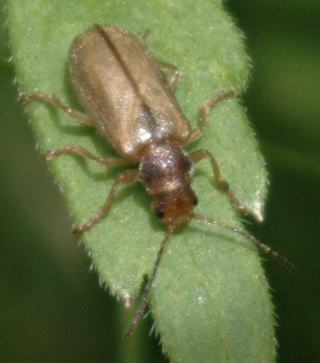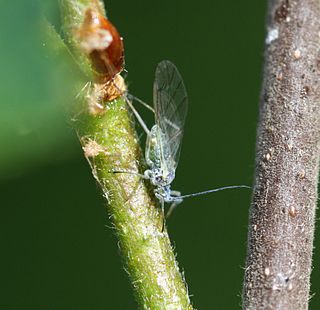ATC code D03Preparations for treatment of wounds and ulcers is a therapeutic subgroup of the Anatomical Therapeutic Chemical Classification System, a system of alphanumeric codes developed by the World Health Organization (WHO) for the classification of drugs and other medical products. Subgroup D03 is part of the anatomical group D Dermatologicals.

The brown hairstreak is a butterfly in the family Lycaenidae. The range includes most of the Palaearctic.
Dothiorella dominicana is a fungal plant pathogen that infects Mangifera indica, the mango tree. In South Africa, it is known as blossom blight. Infection with D. dominicana causes rapid drying and partial or complete death of the inflorescense, and can also cause branch die-back.

The Botryosphaeriaceae are a family of sac fungi (Ascomycetes), which is the type representative of the order Botryosphaeriales. According to a 2008 estimate, the family contains 26 genera and over 1500 species. Members of this order include notable plant pathogens.

Ortholepis betulae is a moth of the family Pyralidae described by Johann August Ephraim Goeze in 1778. It is found in the Europe.
In the 10th edition of Systema Naturae, Carl Linnaeus classified the arthropods, including insects, arachnids and crustaceans, among his class "Insecta". True bugs and thrips were brought together under the name Hemiptera.

Syneta betulae is a species of beetle from the family of leaf beetles, subfamily Synetinae.

Syneta is a genus of leaf beetles in the subfamily Synetinae. There are about 11 described species in Syneta. The genus is entirely holarctic in distribution, with species appearing in North America, Siberia, East Asia and Northern Europe.

Euceraphis betulae, the birch aphid or silver birch aphid, is a species of aphid in the order Hemiptera. It is a tiny green insect with a soft body and wings. It is found living on the European silver birch tree where it feeds and multiplies on the buds and leaves by sucking sap.
Grapevine trunk diseases (GTD) are the most destructive diseases of vineyards worldwide. Fungicides with the potential to control GTD have been banned in Europe and there are no highly effective treatments available. Action to develop new strategies to fight these diseases are needed.
Botryosphaeria viticola is a fungus species in the genus Botryosphaeria responsible for a grapevine trunk disease. This species has a Dothiorella anamorph. It has been isolated from pruned canes of Vitis vinifera cv. Garnatxa Negra in Catalonia, Spain.
Dothiorella moneti is an endophytic fungus that might be a canker pathogen, specifically for Eucalyptus gomphocephala. It was isolated from said trees in Western Australia.
Dothiorella longicollis is an endophytic fungus that might be a canker pathogen, specifically for Adansonia gibbosa (baobab). It was isolated from said trees, as well as surrounding ones, in the Kimberley.
Filatima betulae is a moth of the family Gelechiidae. It is found in North America, where it has been recorded from Massachusetts.
Dothiorella dulcispinae is an endophytic fungus that might be a latent plant pathogen. It was found on Acacia karroo, a common tree in southern Africa.
Dothiorella brevicollis is an endophytic fungus that might be a latent plant pathogen. It was found on Acacia karroo, a common tree in southern Africa.
Phytobia betulae is a species of fly in the family Agromyzidae. It is native to Northern and Eastern Europe, being common in Scandinavia. Its larvae tunnel through the branches and trunk of birch trees, often leaving a dark stain in the timber but not adversely affecting the tree's growth.

Deporaus betulae is a species of European weevil that feeds on birches. It belongs to the family Attelabidae and tribe Deporaini.

Amanita betulae is a species of Amanita found in growing in birch and mixed hardwood in Europe
This page is based on this
Wikipedia article Text is available under the
CC BY-SA 4.0 license; additional terms may apply.
Images, videos and audio are available under their respective licenses.







